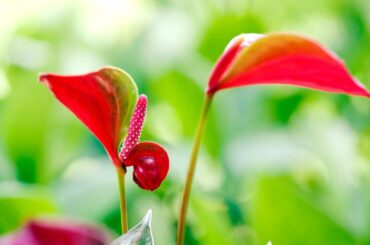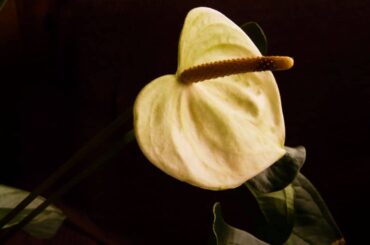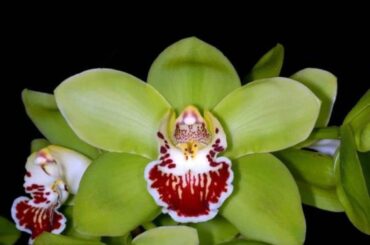I started growing rhododendrons many years ago, and many plant lovers grow these plants simply because of the ornamental value they have. The most striking factor of these plants is their large, showy flower blossoms as well as their ability to thrive in a wide array of climates. But as a beginner, I have to face a few problems with these plants.
Some of my plants die for many reasons. For example;
- Watering issues
- Light condition
- Nutrient deficiencies
- Hot weather
- Fertilization issues
- Pest attacks
- Diseases
But with time, I learned how to maintain Rhododendron plants and how to save a dying Rhododendron plant. So, I am going to elaborate on the root causes that could cause this and the things you could do to overcome it. So. Let’s get into it!
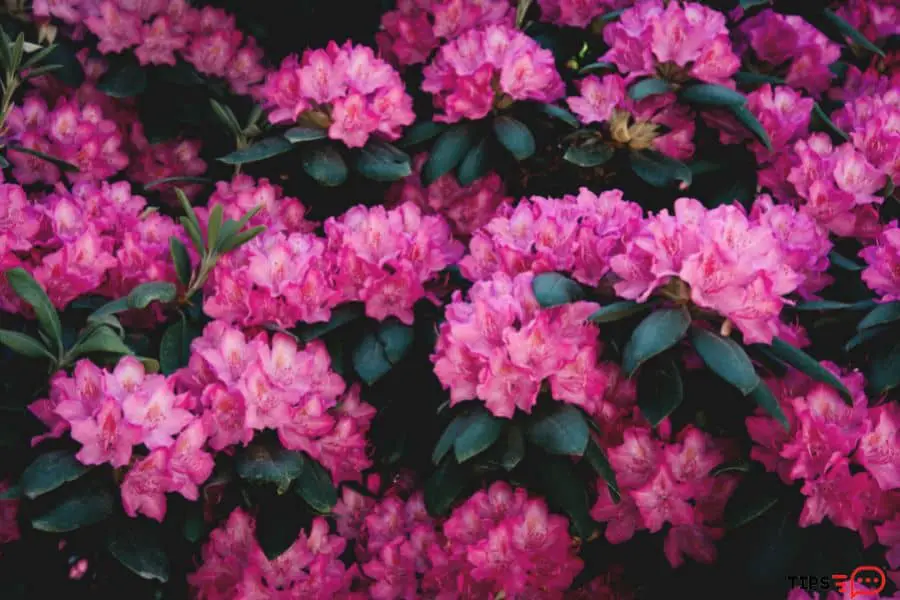
Why Is My Rhododendron Dying?
Rhododendron plants may die for numerous reasons, and below are some of the more commonly found ones that could factor into this and tips on how to save a dying rhododendron.
01. Excess Water
Too much water would kill the plants. Rhododendron plants are used to growing in areas where there will be plenty of rainfall. Hence, they can tolerate some excess water. That said, overwatering could be very harmful to their healthy growth. If there is a waterlogged, soggy condition around the plants, it would make the plant susceptible to diseases such as root rot.
How do you identify that you have overwatered the Rhododendron plants?
One of the most noticeable signs of overwatering in Rhododendron plants is when their leaves begin to wilt or turn yellow. Rhododendron leaves would tend to develop brown spots too. In addition, their stems would be soft and mushy. In addition to that, you could spot the plant’s flowers dropping prematurely too. Rotten roots and soggy, muddy soil are two more signs that would help you determine that they are suffering from over-watering.
How do you save an overwatered Rhododendron plant?
If you doubt whether you are over-watering the plants, the ideal thing you could do is to cut back on watering. Ensure that you allow the soil around the plant’s roots to wither entirely and then proceed with watering. In addition to that, you could check the drainage of the pot and see whether it has sufficient drainage to move out the excess water. It is noteworthy that Rhododendron plants require a well-draining substrate, as only then can they thrive.
Suppose that you find out that the drainage of the pot is poor, then what you could do is repot the plants. When repotting, make sure that you are selecting a pot that has sufficient drainage. Alternatively, you could amend the soil around it. Apart from that, consider changing the watering schedule of the plants. Always remember to water infrequently but thoroughly. When you follow this rule, it will help the plants develop deep, vigorous roots.
02. Under watering
Just like over-watering, too little water could also be troublesome for the plants, which would ultimately kill them. Rhododendron plants would appreciate a constant supply of water so that it would be beneficial for their healthy growth. If you happen to allow the soil around the plants to dry for prolonged periods, it will make the plants’ leaves wilt. Ultimately, it would cause the plants to perish.
How do you identify that you have under-watered the Rhododendron plants?
Unlike over-watering, there are only a few signs that you could use to determine if you have under-watered the Rhododendron plants. For instance, if your Rhododendron plant’s leaves have wilted or turned brown, it means you have only supplied a little water for the Rhododendron plants. In addition to that, if you could spot the plant’s leaves that have become dry and developed crispy edges, chances are that they are suffering from overwatering.
As aforesaid, watering would make the Rhododendron plants’ stems mushy and soft. However, under-watering would make the Rhododendron plant’s stems hard and woody. Premature flower dropping is another feature that you could expect the under-watered Rhododendron plants to come up with. Lastly, if you see a drastic drop in the plant’s growth speed, it means the plants are suffering from underwatering.
How do you save an under-watered Rhododendron plant?
If you figure out that you have under-watered the Rhododendron plants and they are dying due to that, the simplest thing you could do is start watering the plants more frequently. Deeply water the pots until the excess water drains from the bottom.
Ideally, you should water the Rhododendron plants at least once a week. Having said that, you need to water them more often when the weather is too intense and hot. I urge you to check the soil status before you water by simply placing your finger in the soil. If you feel like it is too dry, consider giving some water to make the soil refreshed.
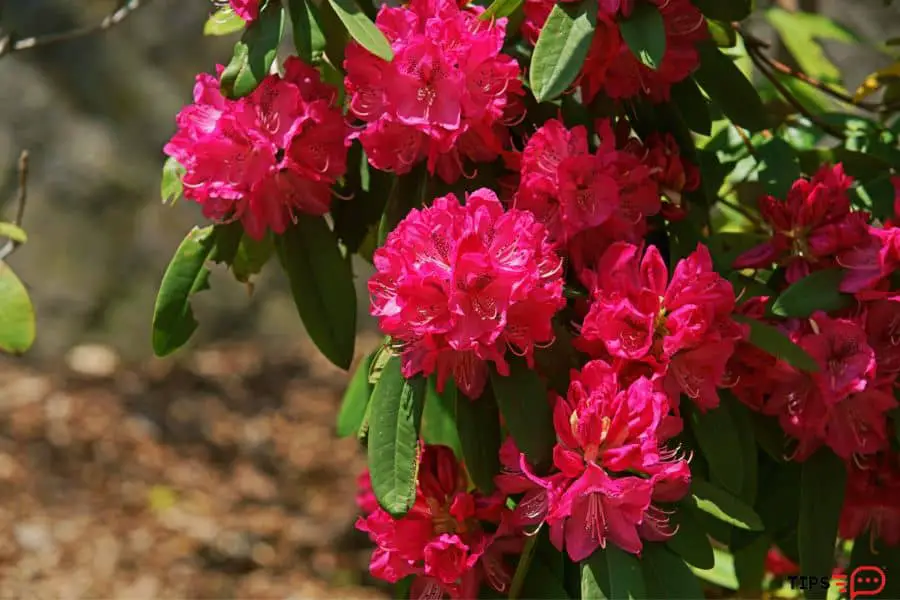
03. Too Much Sunlight
Rhododendron plants are native to forested areas where they receive filtered sunlight. Bear in mind that they will not tolerate direct sunlight, and if you happen to expose them to direct sunlight, it would scorch the plant’s leaves. It would eventually kill the plants as well. Ideally, you need to place the Rhododendron plants somewhere where they can only gain partial sunlight or partial shade.
How do you know that your Rhododendron plants are getting too much sunlight?
Rhododendron plants would develop few signs if they happened to suffer from too much sunlight. For example, rhododendron plants’ leaves would be more yellow once they got exposed to too much sunlight. further, they would develop brown spots too. Wilting or dropping leaves is one more sign that you could use to determine that they have been overexposed to sunlight.
Besides, when these plants go through this condition, the leaves of rhododendron plants tend to take on a wrinkled or crispy shape as well. Other indicators include faded flowers and premature flower dropping.
How To Save a Rhododendron That Is Getting Too Much Sunlight?
You should move the plants to a shady place, and that is the first thing you should do. If you are growing them indoors, ensure that you don’t keep them in a place where they will be exposed to excess sunlight. Ideally, you need to place them in a spot where they will be secure from the intense, harsh sunlight, especially during midday. Some people try growing the plants under a tree or planting them in a pot and keeping them in a shady spot.
04. Too Little Sunlight
Just like harsh sunlight would kill the Rhododendron plants, too little sunlight would also badly affect the healthy growth of the plants and kill them in the end. It is vital that Rhododendron plants receive sunlight for at least four hours. If not, they will become weak and leggy. In addition to that, rhododendron plant leaves would become either yellow or brown due to a lack of adequate sunlight.
How To Tell If Your Rhododendron Is Getting Too Little Sunlight
If Rhododendron plants are suffering due to a lack of sunlight, you could see how their leaves become pale green or yellow. Furthermore, they would develop lengthy growths as well. Besides, these plants would tend to look weak.
Furthermore, Rhododendron plants that are affected by this will develop small leaves. The plants that are lacking sufficient sunlight likely tend to stretch toward a lighting source too. Furthermore, you would not be able to spot any of these plants coming up with flowers. Stunted growth is another sign that you could spot among the plants that are lacking adequate sunlight.
How To Save a Rhododendron That Is Getting Too Little Sunlight?
You need to shift the plants to a sunny spot so that they can fulfill their sunlight requirement. Do not place them in direct sunlight.
05. Nutrient Deficiencies
Another factor that would cause the Rhododendron plants to die is a lack of nutrients. These plants must gain adequate levels of prime nutrients such as nitrogen, phosphorus, and potassium. In addition to these, they need nutrients such as iron, magnesium, and sulfur too.
How To Tell If Your Rhododendron Has A Nutrient Deficiency
If you happen to see that your beloved Rhododendron plants have developed yellow leaves along with very little flowering, chances are that they are lacking some of the main nutrients. In addition to these characteristics, you could see slow growth in the plants as well.
How To Save A Rhododendron With A Nutrient Deficiency
If the rhododendrons are dying due to nutrient deficiency, you need to start fertilizing the plants immediately. I suggest you use a fertilizer that contains nitrogen, phosphorus, and potassium. That said, you may also use either a general-purpose fertilizer or a slow-release fertilizer for this purpose. Furthermore, you may also consider transplanting the plants. That would allow the plants to gain nutrients quickly.
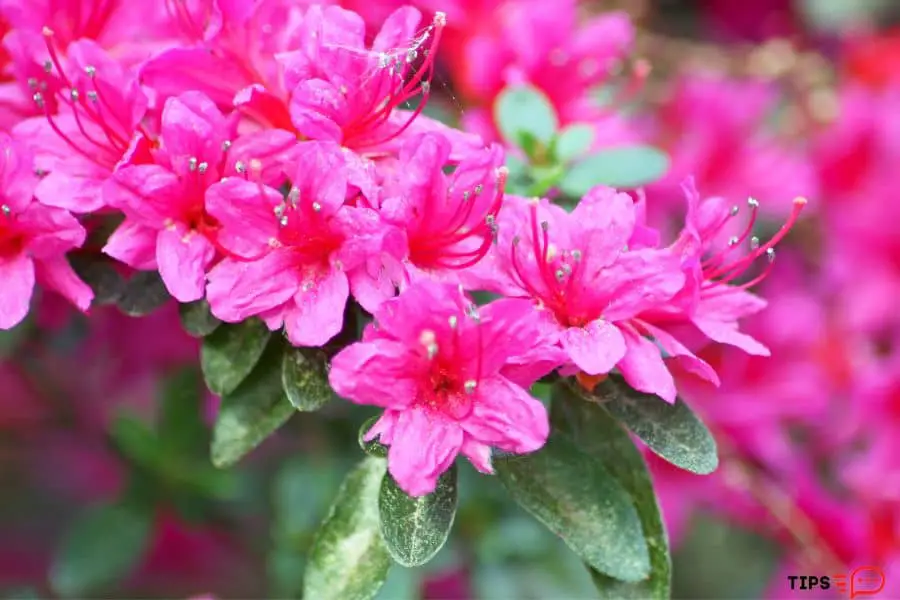
06. Cold damage
Rhododendron plants are quite sensitive to cold weather, and the slightest exposure to frost would make them suffer from cold damage. This could be another reason for the rhododendron plants to die. Frost or freezing temperatures are not to the liking of these plants.
How To Tell If Your Rhododendron Has Cold Damage
If your Rhododendron plants experience any cold damage, you could see them developing brown-black leaves. Apart from that, those leaves would tend to lose their regular color too. Not only that, it would badly impact the growth pattern of the plants too.
How To Save A Rhododendron With Cold Damage
Moving the plants indoors is the best thing you could do to save the plants here. Furthermore, when you select a new spot, make sure that the temperature around that area does not drop to 60 degrees Fahrenheit. Some people tend to protect the plants from frost by covering them with a light cloth or with plastic bags as well.
07. Hot Weather Damage
Heat damage is one more root cause that would kill the plants. Exposure to extreme weather conditions would burn the flowers as well as the leaves. A temperature range of around 60 and 80 degrees Fahrenheit would be the most appropriate temperature for the optimal growth of these plants. As a result, exposing them to extremely hot weather will cause stress in the plants.
How To Tell If Your Rhododendron Has Hot Weather Damage
The Rhododendron plants that experience hot weather damage would also develop wilted and yellow leaves; by the bedside, you could spot those plants carrying dead flowers as well. Stunted growth would be one more sign of the plants that go through this condition.
How To Save A Rhododendron With Hot Weather Damage?
If your precious plants are suffering from heat damage, you need to move them to a cooler spot as promptly as you can. Ensure that the plants don’t get exposed to temperatures above 80 degrees Fahrenheit.
Do not leave them in a location where they will receive direct sunlight, as if so, it would worsen the situation. You could be tactful about increasing the humidity around the plants by either misting them or placing a humidifier closer to the plants.
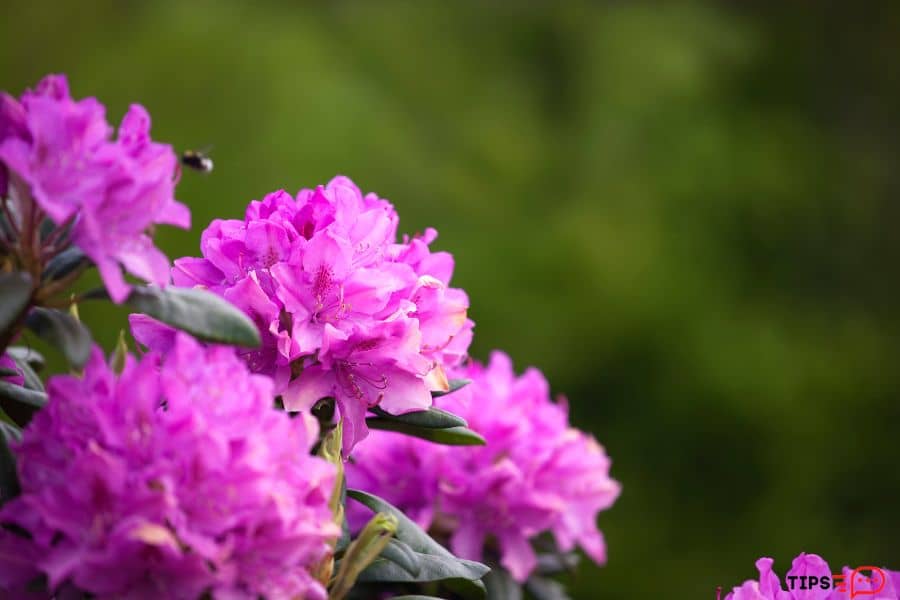
08. Overfertilization
Overfertilization could be another reason why Rhododendron plants may die. Overfertilization could take place if you happen to feed the plants more often or feed them in excess. When the plants are exposed to over fertilizing conditions, it badly affects the plant’s roots in particular. It is possible that it will even burst the plants’ roots.
How to identify If Your Rhododendron Is Over Fertilized?
Rhododendron plants that have been over-fertilized will develop yellow or wilted lower leaves. Furthermore, you could see how their leaf edges and roots turned brown.
How do you Save Over Fertilized rhododendrons?
If you consider that you have overfertilized the Rhododendron plants and they are dying due to that, then you need to ideally flush the roots with some water. When watering, make sure that you do it thoroughly. Once you finish watering them, you need to ensure that there is no excess water remaining in the pots as well.
If you wish, you may also take the plants out of the pot and then rinse them off with water. After you’ve completed all of these steps, you can transplant the plants, preferably in a well-draining substrate. Skip feeding the plants for about one month.
09. Pests
Pest attacks are another root cause of Rhododendron plant extinction. Pests such as mealybugs, aphids, scales, and whiteflies are some of the types of pests that attack these plants. They would tend to suck the sap out of the leaves and make the leaves either yellow or brown. Besides, they would badly affect the flower blossoms of the plants too.
How To Tell If Your Rhododendron Has Pests
If you come across any sticky leaves, damaged flowers, or holes in the leaves, pests have likely invaded your precious Rhododendron plants. Apart from that, you may also spot these plants carrying yellow or wilted leaves as well.
How do you Save A Rhododendron With Pests?
If you suspect that your plants have been infested by any of the aforesaid pests, you need to immediately check the plant’s leaves and see whether you can spot any signs of the pests’ attack. If you happen to come across any pests, you need to immediately remove them manually. Alternatively, you may also use a cotton swab dipped in rubbing alcohol and then apply it to the pest’s infected spots on the plants.
If you are certain that aphids have invaded your plants, you need to wash them off with a hose. Alternatively, you could use either neem oil or insecticidal soap to remove them. Ensure that you keep the plants healthy, as pests tend to attack weak plants in particular. If none of these methods work, the best option would be to transplant them.
10. Diseases
Diseases could be another factor that would kill the Rhododendron plants. For example, Rhododendron plants are prone to diseases such as root rot, powdery mildew, and leaf spot. There’s a good chance that these ailments would prove to be fatal for them as well. If we further elaborate on this, excess water contributes to root rot. Ultimately, it would make the plants wilt too. On the other hand, powdery mildew is more like a fungus infection, which would make these plants develop white spots. Lastly, leaf spot is also a fungal infection that results in black spots on the Rhododendron plant’s leaves.
How To Tell If Your Rhododendron Has a Disease
Rhododendron plants that suffer from diseases may show signs such as wilting leaves, yellowed or blackened leaves, black or brown spots on the leaves, etc.
How do you Save A Rhododendron With a Disease?
If you are sure that your Rhododendron plants are suffering from a disease and are dying due to it, you need to isolate the plants rapidly. It will help you avoid spreading that disease to the rest of the plants. Thereafter, you need to remove the affected leaves. Moreover, you can treat the affected plants with a chemical fungicide while adhering to the labeled guidelines.
Final Words On How To Save A Dying Rhododendron
Rhododendron plants are versatile, cute-looking plants that would add so much glamor to your garden. That said, chances are that they may come across several problems that would result in the death of the plants as well. However, you could save the rhododendron plants if you practice the remedies that are mentioned above. In other words, to avoid the rhododendron plants dying, you need to make sure that these plants are growing healthily and vigorously.
18.2K subscribers
Read Next : 10 Amazing Anthurium Plant Benefits
Read Next : How to Plant Anthurium in Pots? (It’s Easy)
Read Next : Why Do Anthurium Flowers Turn Yellow? (7 Reasons)

